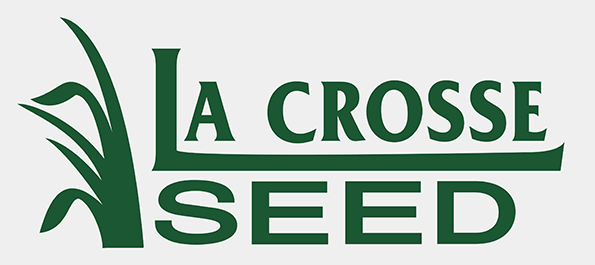Seed categories and product pages can be accessed from this menu:
La Crosse Seed Product Tech Sheets
For general Information regarding this species, scroll below the list of tech sheet links.
General Information Concerning Summer Annuals
Characteristics
The Summer Select® Summer Annual forage portfolio includes proven, high-performance options for sorghum x sudangrass, forage Sorghum, grain sorghum, pearl millet and teff grass.
Many varieties within our proprietary Summer Select® portfolio include the brown mid-rib (BMR) trait, which denotes improved digestibility and higher energy forage. Also within the lineup are varieties that include the brachytic dwarf trait, which assures greater leaf-to-stem ratio and improved standability.
Forage Sorghum
Excellent choice when used for silage in a single cut system. Stems and leaves are similar to corn and produce as much silage/acre. Protein content of sorghum silage is similar to corn, but less digestible because of the lower grain content and higher fiber content. Although forage sorghum can regrow, regrowth is much slower than sorghum x sudangrass.
Seeding Rate:
Alone (lbs./acre): 6-20
Seeds/lb.: 14-20,000
Depth (in.): 3/4 – 1
Planting Time:
May-July
Emergence (days): 10
Grain Sorghum
Grain sorghum has traditionally been used for livestock feed and is considered a drought tolerant, high energy, high yield summer annual crop. Its stems and foliage are used for hay, green chop, pasture and silage. Grain sorghum has also gained popularity as a gluten-free food product and use in ethanol production.
Seeding Rate:
Alone (lbs./acre): 4-20
Seeds/lb.: 13-16,000
Depth (in.): 1-2
Planting Time:
May-July
Emergence (days): 10
Pearl Millet
Rapid growing, high quality warm season annual. It can be grazed by animals demanding quality forage such as dairy cows. It can also be plowed down for high organic matter, used as a cover crop, dry hayed, ensiled or green chopped. Due to large stem, a hay conditional and extra drying days may be required. Pearl millet’s outstanding tillering capabilities can turn a poor stand into an excellent stand.
Seeding Rate:
Alone (lbs./acre): 10-20
Mixes (lbs./acre): 5-20
Seeds/lb.: 50,000
Depth (in.): ½ – 1
Planting Time:
May-July
Emergence (days): 3-5
Sorghum x Sudangrass
Primarily used for grazing and hay production in multi cut systems due to high regrowth potential. Faster regrowth than forage sorghum and stronger stalk strength than sudangrass. Larger stems make drying for hay more difficult than sudangrass. Yield is generally less than forage sorghums, but higher than sudangrass.
Seeding Rate:
Alone (lbs./acre): 25-50
Mixes (lbs./acre): 5-20
Seeds/lb.: 21,000
Depth (in.): 3/4 – 1 ½
Planting Time:
May-July
Emergence (days): 10
Teff Grass
Warm season annual with rapid seed germination and development. It can be harvested multiple times during the growing season, and used as dry hay, silage or pasture. Teff grass combines excellent forage quality with high yield despite its relatively short growing season. It germinates quickly after planting and reaches heading stage in 8 weeks. Use caution when grazing teff grass as it is shallow-rooted and livestock may pull plants from the ground.
Seeding Rate:
Alone (lbs./acre): 8-12
Seeds/lb.: 1,300,000
Depth (in.): ¼
Planting Time:
May-July
Emergence (days): 3-5
Management
General summer annual management information is listed below. For product and species-specific management information visit product pages.
Fertility
- Please test your soil
- Under favorable conditions, 1-1¼ lbs. of nitrogen/day of planned growth should be available for ultimate growth, with little risk for nitrate poisoning
- Potassium levels should be maintained similar to that of corn
- If soil pH is greater than 7.2, an application of Iron may be necessary to prevent iron chlorosis
Avoiding Nitrate and Prussic Acid Poisoning
- Do not harvest drought stricken plants within four days following heavy rain
- Do not apply nitrogen prior to expected drought periods
- If in doubt, cut at higher stubble height as nitrates tend to
accumulate in lower stalk - If high prussic acid is found, wait one month prior to feeding. Unlike excessive nitrates, prussic acid will escape from the plant over time.
Harvest
- Use sharp blades- a clean cutting will enhance regrowth
- Quality levels, including NDFd, protein and more, will decline if crop is harvested after recommended stage of maturity





